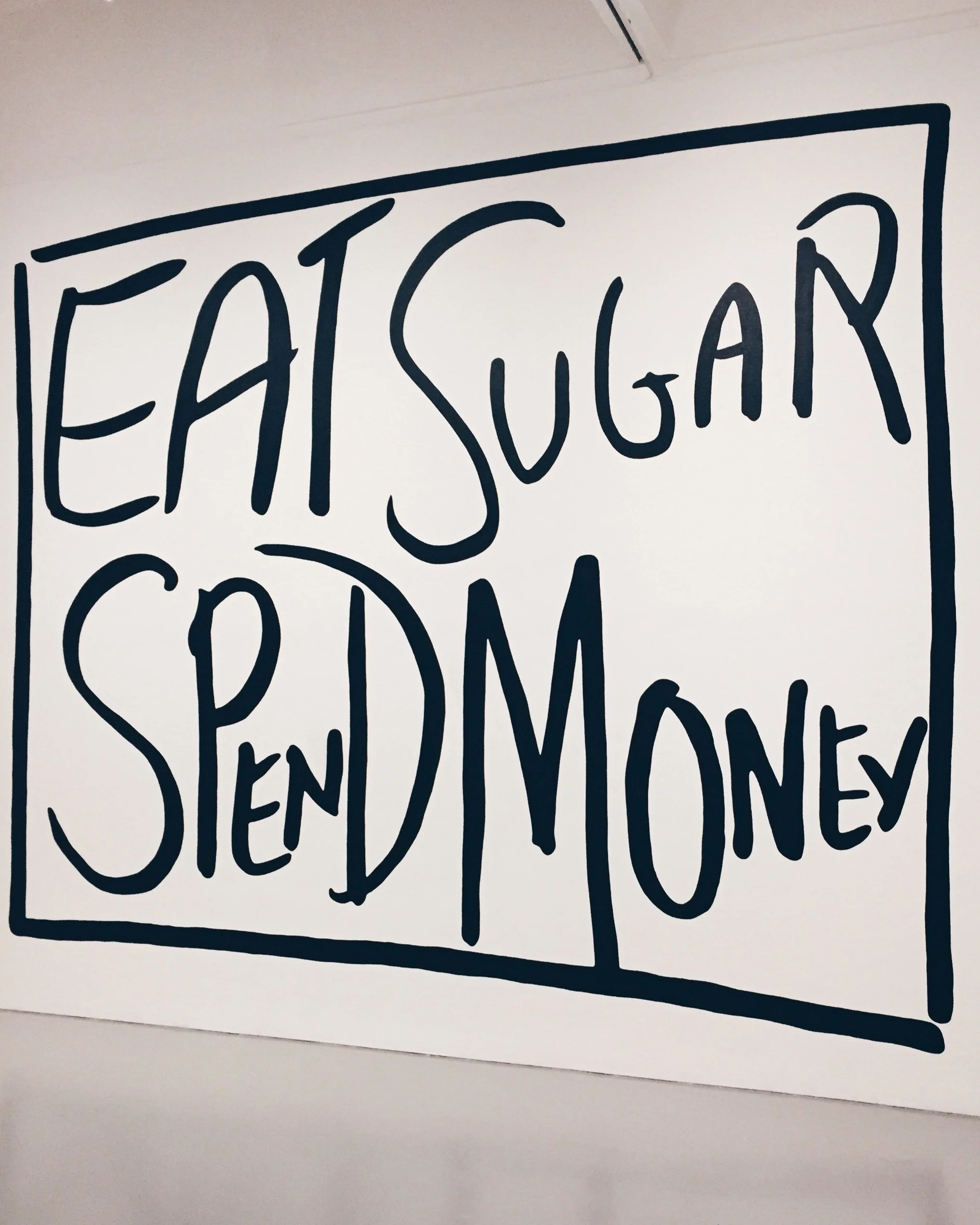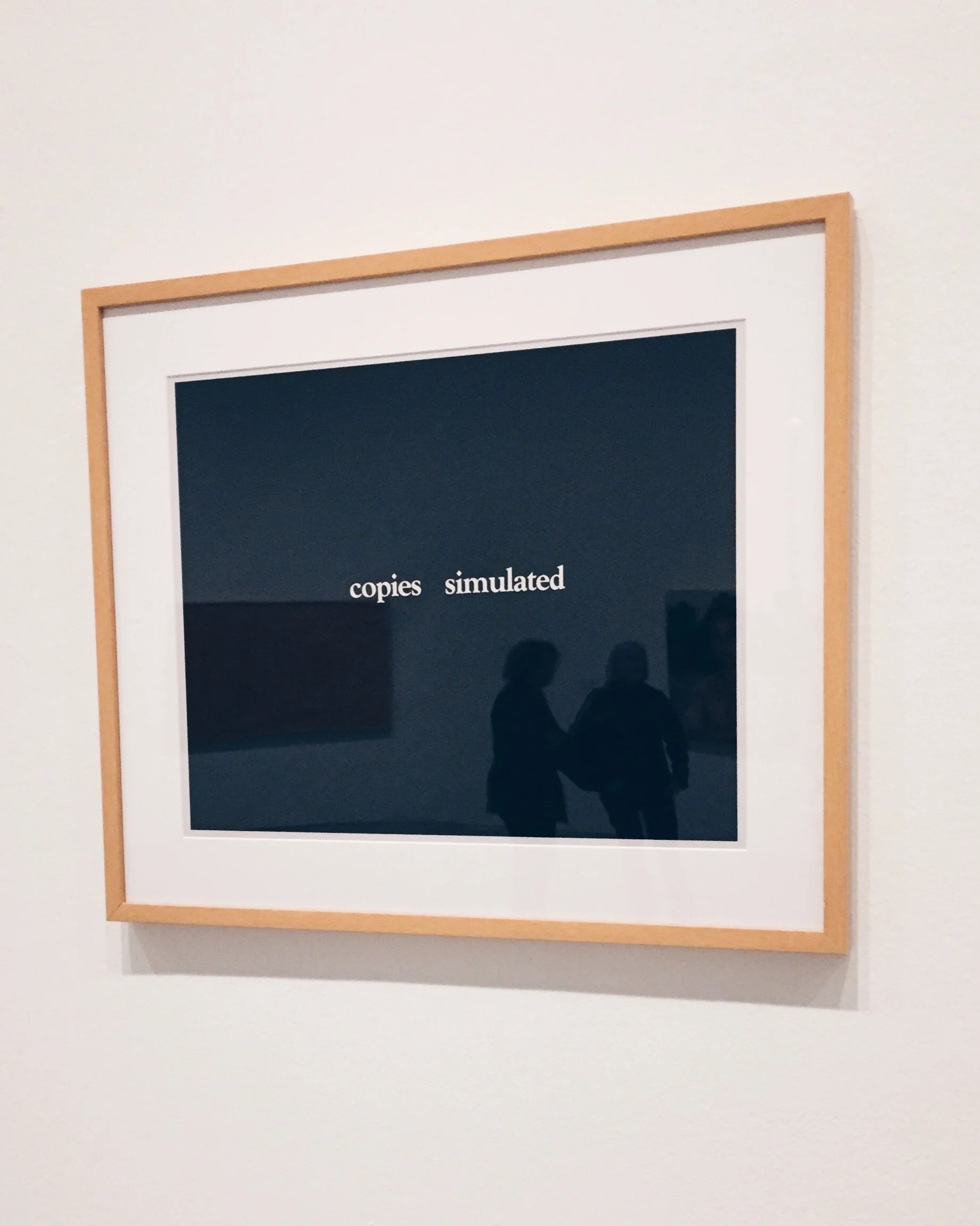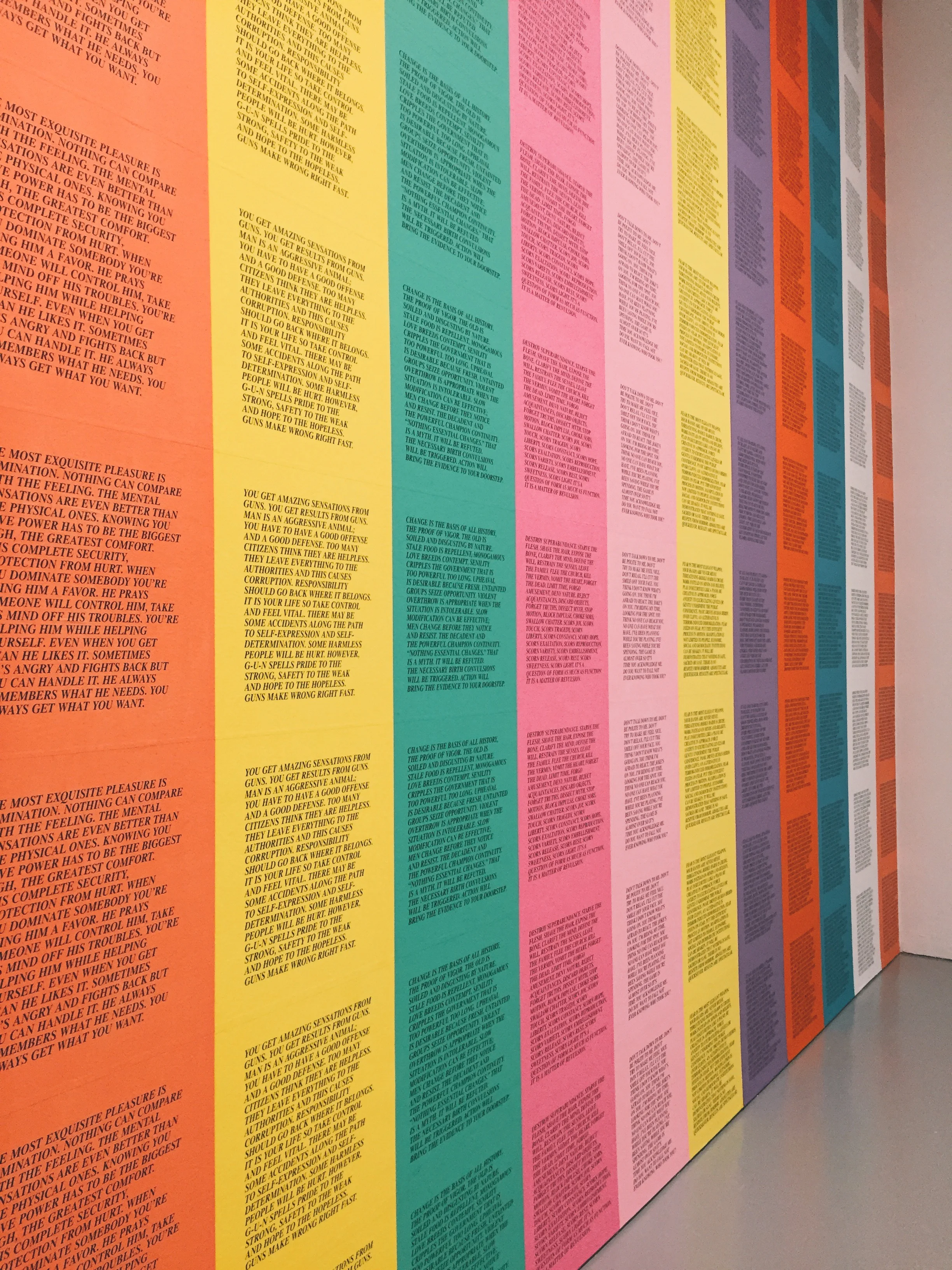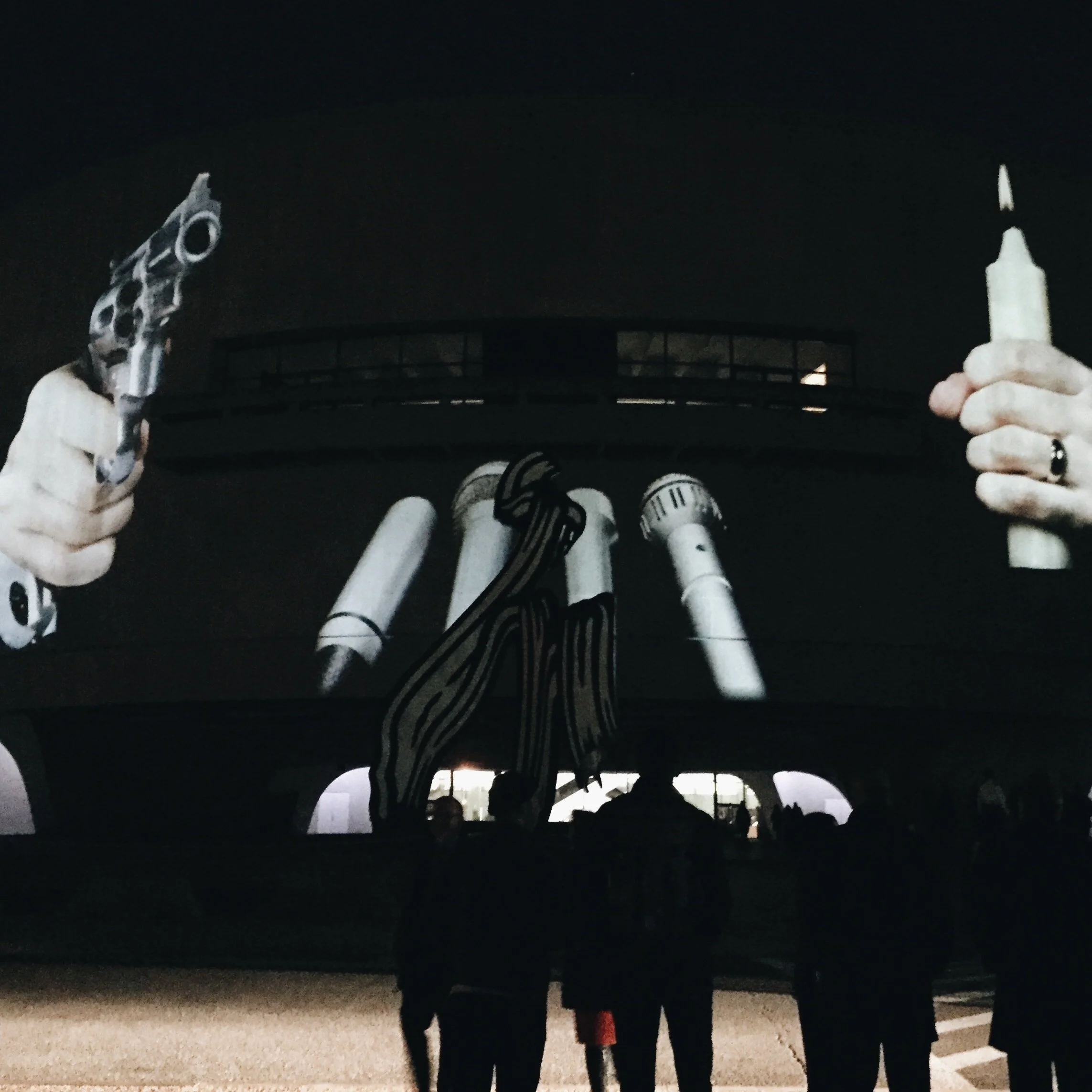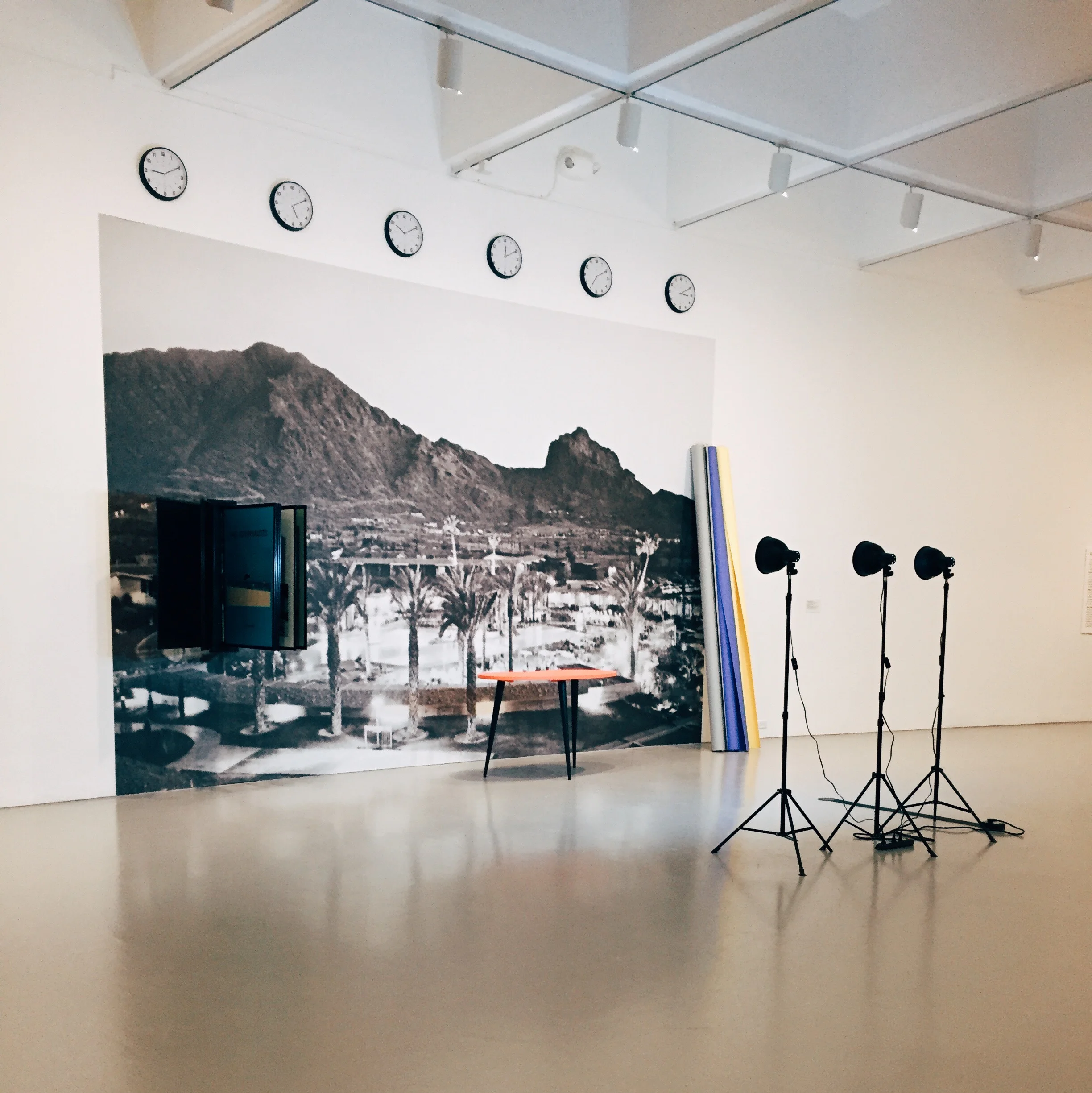Brand New: Art and Commodity in the 1980s
The Hirshhorn Museum and Sculpture Garden recently unveiled their new exhibition, featuring New York artists of the 1980s. The exhibition focused on the commercialization of art, the subversion of the commodity, and the artist-as-brand among many other themes.
I experienced the exhibition two nights before its official opening, which included a tour from curator Gianni Jetzer. Jetzer's tour helped contextualize a lot of the show, which can be hard to fully grasp without some background information and history of the contemporary art market. The exhibition focused on a number of themes surrounding advertisement, entertainment, and even the AIDS crisis.
While a lot of the art was aesthetically pleasing and often colorful, it was a particularly subversive—and at times, cynical—show. I believe this is what makes the exhibition so important. It wasn't so much that these all of these artists found joy in consumerism or branding, rather they were inherently making commentary on the state of the art world by adapting to versions of consumerist/commodity-driven frameworks.
However, the exhibition wasn't trying to impose a moral conclusion on the commodification of art. The art featured included commentary varying from critical to enthusiastic, which provided a nice balance.
I found the most powerful pieces in the show were the ones that referred to the AIDS crisis. While it veered off slightly from the primary themes of the show, these pieces definitely made a statement. Another special moment was the restaging of Krystof Wodiczko's iconic projection on the facade of the Hirshhorn, which was a limited-time projection special for the opening of the exhibition.
Left to right: Matt Mullican, Signs Series. General Idea, The Boutique of the 1984 Miss General Idea Pavillion
Jessica Diamond, T.V. Telepathy (Black and White Version)
Peter Halley, Copies Simulated
Jenny Holzer, The Inflammatory Essays
Barbara Kruger, Untitled (You Rule by Pathetic Display)
Krzysztof Wodiczko, Unititled
Barbara Bloom, Planned Abandon



